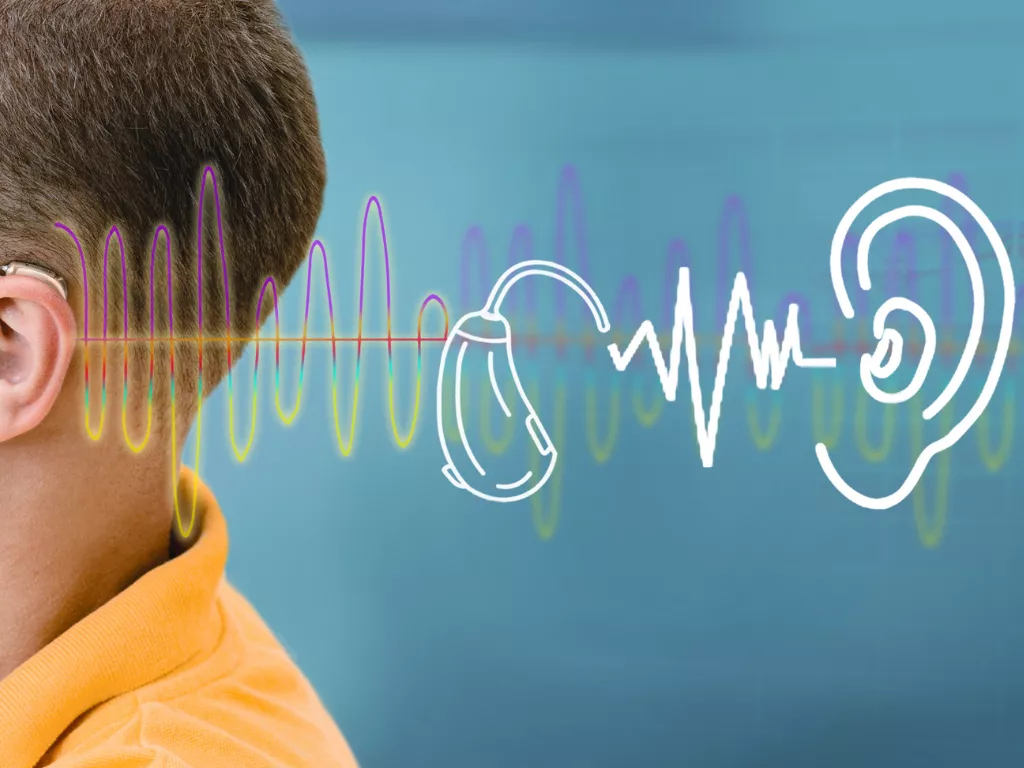Alternative to Animal Testing
Introduction:
In drug testing, animals are often used because it's considered one of the most effective methods to evaluate a drug's toxicity and effectiveness.
In the future, we anticipate changes to this process as an increasing number of nations reaffirm their commitment to the 3Rs philosophy—emphasizing the replacement, reduction, and refinement of animals in scientific research. On the other side, there are now more technological alternatives to animal testing. The need for developing and implementing alternative methods hinges on how well the currently used animal models can replicate human physiology and exposure, considering the complexity of the research issue.
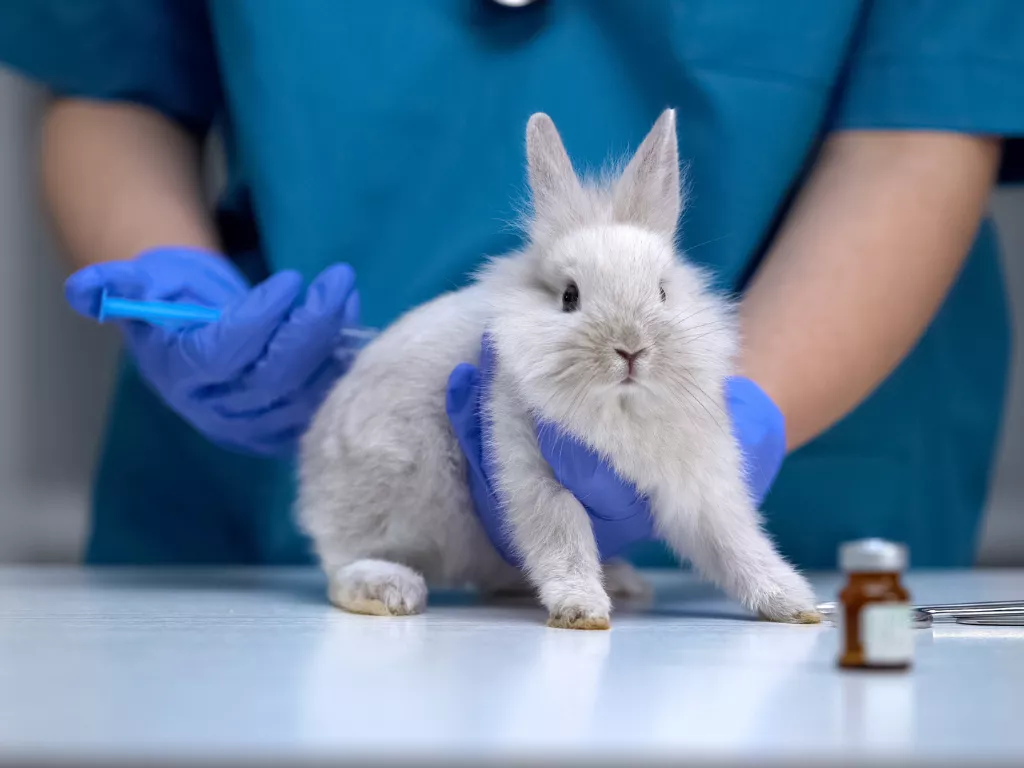
Replacing animal testing doesn't mean endangering patients. It also does not imply halting medical advancement. The quality and humanity of our science will instead be improved by replacing the use of animals in experimentation.
Thankfully, non-animal research and development are expanding quickly. Animal testing is being phased out because of scientific advancements in fields including toxicity testing, neuroscience, and drug development.[1]
Replacing Animal Tests with
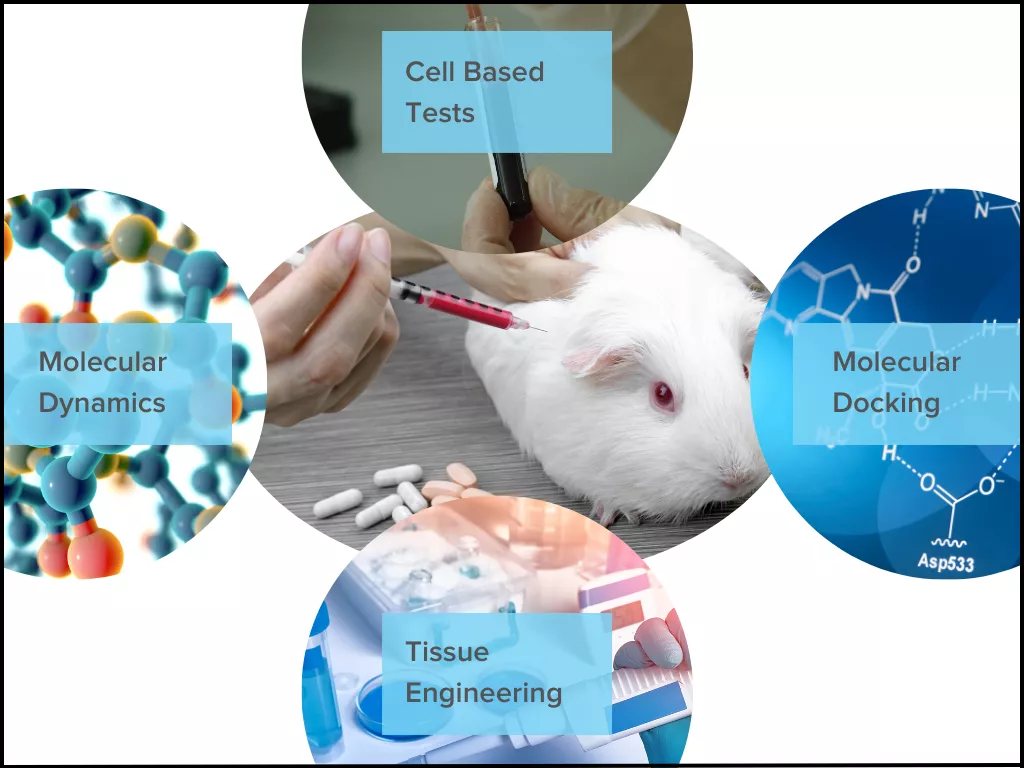
In recent years, there has been a slight but noticeable shift away from animal testing and towards in vitro and nonanimal methods, partially because of advancements in biological methods and partly in reaction to challenges from the political and economic spheres. For frequently used tests, numerous novel approaches are being explored. Although most of these have not yet been proven, they can already be used to screen chemicals in place of animal testing.
There are many other alternative strategies to maintain a strategic distance from the use of animal testing, including changes to test format or data planning to utilize fewer animals or alterations to conventions to decrease trouble or inconvenience in animals.
While not all of these alternatives have been fully validated, some show promise in screening chemicals, suggesting potential usefulness in minimizing the need for animal testing. Numerous alternative strategies exist to avoid the necessity of animal testing. These include modifying test formats or data planning to minimize the use of animals, as well as adjusting protocols to reduce distress or inconvenience for animals involved.
It is occasionally possible to replace animals with living tissues, organs, and cells taken from humans or other animals. The development these systems demand a substantial investment of time and financial resources compared to the modification of animal procedures. They nearly never generate accurate dose-response data, which is essential for determining possible toxicity to humans, and are almost always less predictive than animal experiments. The LD50 is possibly the most popular and discussed toxicity test. However, it is the main institutional barrier to curtailing or abolishing its use because many regulatory frameworks depend on it for substance classification.
[The LD50 (median lethal dose) test is to estimate the dose of a test substance that produces 50% death in a given species of animals.]
Testing procedures that use fewer animals in the short run are the most promising alternatives. Computer modeling and cell culture techniques offer some potential, but their application is still limited.
The outer (chorioallantoic) membrane of a 14-day-old chicken embryo is used in a different method. Despite using an entire animal embryo, this procedure is said to be painless because the membrane is largely untroubled. A skin irritant may also benefit from these alternatives. The potential reductions in testing time and costs are relatively significant, and these procedures also require a significant number of animals, therefore alternatives to carcinogenicity testing and repeated dose toxicity testing are of particular interest. Tests in living, non-animal, living cell cultures and organisms are the most promising alternatives.
There are several in vitro or non-animal procedures used in mutagenicity testing. Because it can have a long-lasting impact on the human gene pool and because it can be the first step in other types of toxicity, such as carcinogenicity, mutagenicity is of special concern. The Ames test is the most popular non-animal mutagenicity assay. The Ames has potential as a substitute for carcinogenicity testing when used in conjunction with other tests, but it has not yet been approved for this purpose. The rapid development of biological approaches, which are being used to find alternatives in several laboratories, is generally facilitating the creation of alternatives.
Rockefeller University and The Johns Hopkins Centre for Alternatives to Animal Testing are both making significant contributions to the coordination of these initiatives in the United States.
The Genesis of the 3Rs
The William Russell and Rex Burch-developed "3Rs"—Replacement, Reduction, and Refinement—have come to stand for actions to enhance the well-being of animals used in research and are currently utilized as a moral framework for enhancing laboratory animal welfare globally. However, it is not easy to adapt to the 3Rs at the global level. It will take a non-confrontational/compromising and scientific approach to reduce the usage of animals.
The 3Rs principle was not entirely new, just like other areas of scientific research. Richmond explains how some of the ideas or at least portions of them had been popular for many years [2,3]. Marshal Hall outlines five criteria for the application of physiology, which incorporates many of the 3Rs [1].
When observation can provide us with the necessary information, we should never turn to experimentation.
- No experiment should be carried out without a clear and specific goal, and without being convinced after the most mature consideration that the goal will be accomplished and result in a true and straightforward outcome.
- We shouldn't conduct the same experiment twice.
- That it ought to be implemented with the least amount of suffering.
- Each physiological experiment should be carried out under conditions that ensure proper observation and verification of its results and, to the extent possible, eliminate the need for its repeat.
3R Principle
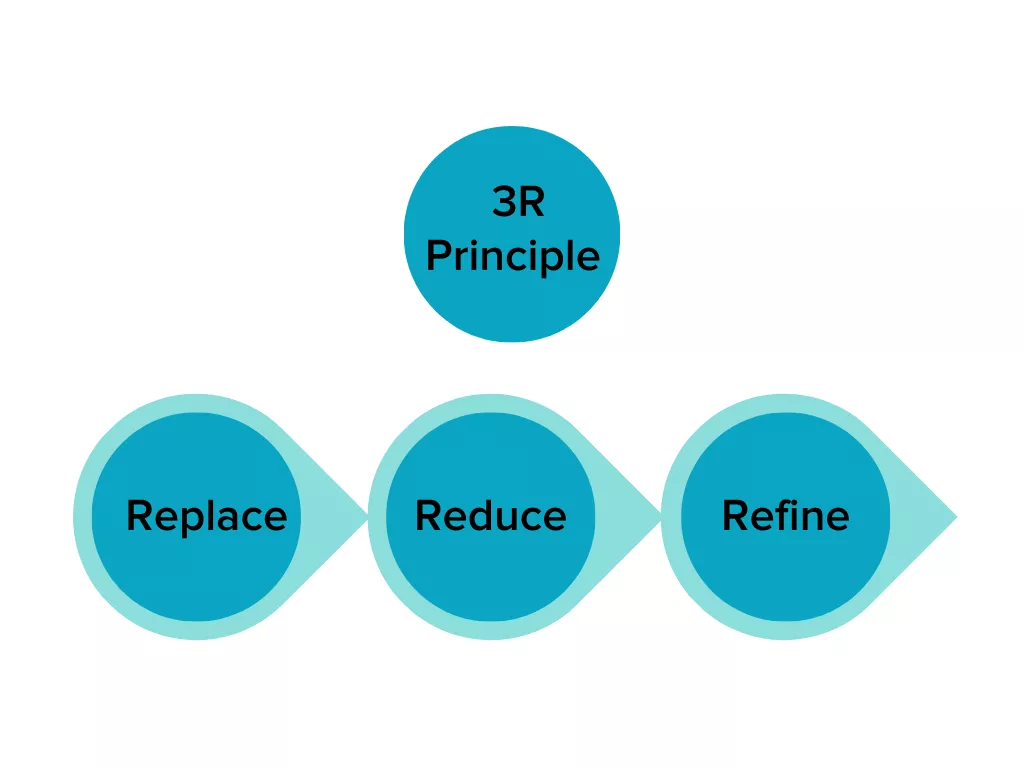
1.1 Replacement
Replacement is the first step. Methods, tactics, or strategies that don't employ living animals are referred to as replacements.
A variety of methods, or their combinations, may be used to achieve replacement, such as:
- In-vitro systems utilizing tissues, complete cells, or portions of cells
- Biochemically based systems that use man-made (macro) molecules as stand-ins for (reactive) toxicity targets. These techniques are known as "in chemico."
- Computer-based models and methods, also known as “in silico”
- Utilization of "omics" technologies (e.g., transcriptomics, proteomics, and metabonomic)
- Non-testing methods like the "read-across" method.
1.2 Reduction
The term "reduction" refers to any strategy that will use fewer animals overall to accomplish the same goal, such as increasing the amount of data collected from each animal, minimizing the number of animals used in the initial procedure, and/or restricting or avoiding the use of additional animals in the future. In situations, where doing treatments on animals more than once won't compromise the scientific goal or harm animal welfare, the number of animals can also be decreased.
The advantage of reusing animals should, however, always be weighed against any negative impacts on their welfare, taking into consideration the animal’s lifetime experience. Because of this inherent conflict, each situation should be considered when deciding whether to reuse an animal.
1.3 Refinement
Today, the term "refinement" refers to any changes made to husbandry and care techniques from the moment an experimental animal is born until it dies to lessen the pain, suffering, and distress that the animal experiences and to improve its overall well-being. There are frequently concomitant physiological changes that could raise the unpredictability of scientific findings when an animal experiences pain, suffering, or discomfort.
Therefore, refinement is also likely to increase data quality and aid in reduction. Moving from species that are thought to be more sentient to those that are less sentient is another way to refine. Examples include replacing the usage of an adult fish with fish during earlier stages of its life, such as before it came under the purview of the directive.
Types of non-animal methods
1. Cultures of cells
The majority of human and animal cell types can be produced in a lab. In some instances, scientists have even been able to induce the growth of 3D structures from cells, like tiny human organs, which can be used to test new treatments more accurately.
2. Human tissues
Animal experimentation is not always the most relevant method for researching human biology and disease. Human volunteers donated healthy and diseased tissues can be used instead.
After surgery, human tissue can be donated. (e.g., biopsies, cosmetic surgery, and transplants). As an alternative to the cruel rabbit irritation testing, skin and ocular models built from reconstituted human skin and other tissues have been produced.
3. Computer models
The ability to "model" or "replicate" portions of the human body is becoming more and more possible because of the increasing sophistication of computers.
There are already computer simulations of the musculoskeletal, digestive, cardiovascular, and respiratory systems. Based on available knowledge and mathematical facts, they can be utilized to run virtual experiments.
3. The Adoption and Spread of The 3Rs
Institutional Animal Ethics Committees (IAEC) in India approve protocols; its prime objective is to examine and approve them while keeping in mind the 3Rs. They also must inspect the institution's animal facility at least twice a year.
An appendix to the directive included general principles and minimum size requirements for animal housing. Conferences, workshops, the creation of new organizations, and other activities supported the late 1980s and early 1990s efforts to find alternatives to the usage of animals.
Numerous organizations and information hubs have been established, most notably the Interagency Coordinating Committee on the Validation of Alternative Methods (ICCVAM) in the United States and the European Centre for the Validation of Alternative Methods (ECVAM) in Europe.
Institutions must follow Public Health Service (PHS) policy and USDA Animal Welfare Regulations in the US to ensure that alternatives to research that cause more than slight or momentary pain or distress in animals are properly considered. These alternatives must also be in line with sound experimental design and be described in terms of the 3 R's [1].
4. Conclusion:
The non-confrontational and intellectual approach of the Universities Federation for Animal Welfare (UFAW) to animal welfare issues, Russell and Burch's vision and choice to focus on general rather than specific difficulties, and the collaboration of researchers is what gave rise to the 3Rs. The 3Rs have offered a distinct list of guidelines to enhance the welfare of animals used in the research and scientific results.
Russell and Burch made a difference by introducing alternative, more compassionate procedures, better housing, and husbandry, as well as improved awareness of animal welfare among biomedical researchers.
The 3Rs are still not effectively implemented anywhere in the world. It has been 60 years since their publication, the voyage is still ongoing. Research into alternative test methods has led to the incorporation of a range of new cell and tissue culture systems into the collection of alternative methods.
Although the efforts to find alternatives to animal testing methods have produced several successful results, a great deal still needs to be done before it will be possible to eliminate animal testing. This will require consistent use of the most progressed research methods within the areas of molecular biology and computer technologies. Besides saving countless animal lives, alternatives to animal tests are efficient and reliable. Unlike rough, age-old animal tests, new alternative non-animal methods usually take less time.
Decos can help in identifying non-animal-based tests that can be adopted to reduce the use of animal testing, achieve results in less time, and obtain regulatory approval.
References
- Hubrecht; et al, The 3Rs and Humane Experimental Technique: Implementing Change, Animals 2019, 9, 754
- Richmond, J. The Three Rs. In The UFAW Handbook on the Care and Management of Laboratory and Other Research Animals, 8th ed.; Hubrecht, R., Kirkwood, J., Eds.; Wiley-Blackwell: Oxford, UK, 2010; pp. 5–22.
- Richmond, J. The Three Rs: A journey or a destination? ATLA 2000, 28, 761–773.
- Hall, M. On experiments in physiology as a question of medical ethics. Lancet 1847, 1847, 58–60. [CrossRef]
- Alternatives to Animal Testing, Hajime Kojima • Troy Seidle Horst Spielmann, 2019
- Animals used for scientific purposes - Environment - European Commission (europa.eu)
- Henkle, Alternatives to Animal Testing, 2008
This blog is written by Supriya Srivastava, Senior Systems Engineer - Biocompatibility, at Decos. She is expert in Toxicology, Pharmacology, and Regulatory Toxicity Testing. She comes with a wealth of experience in medical device testing.
Decos is a cutting-edge technology services partner ready to meet your software needs in the medical domain. If you have a question on one of our projects or would like advice on your project or a POC, just contact Devesh Agarwal. We’d love to get in touch with you!
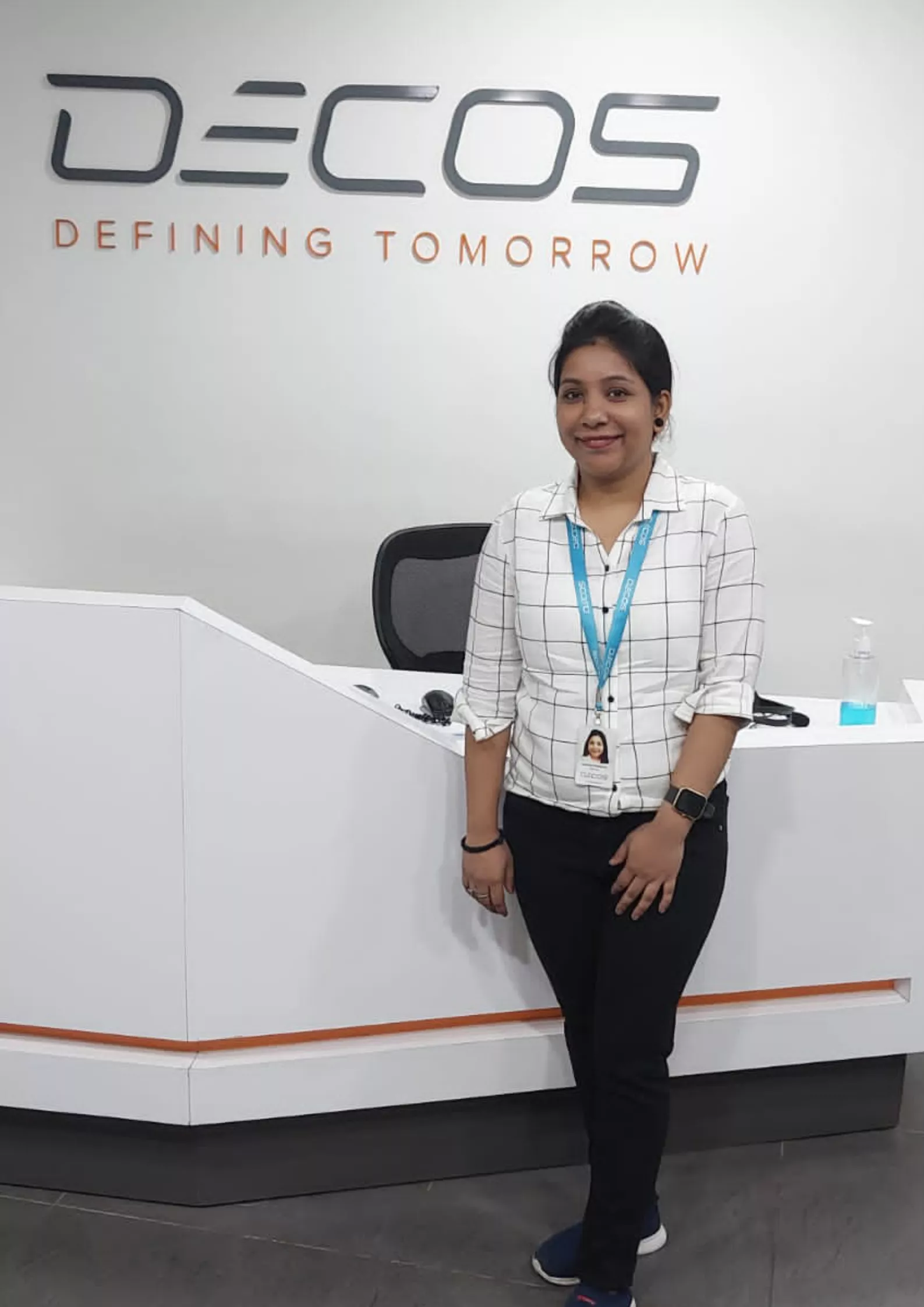
Discover more
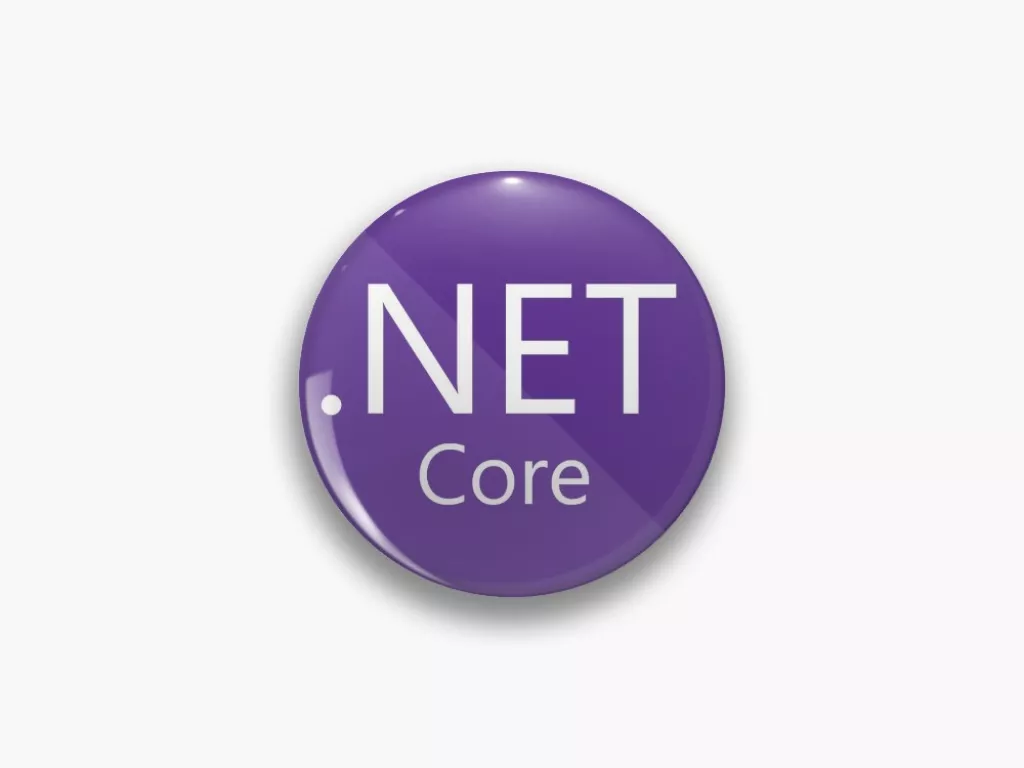
Efficiently loading assemblies at runtime with .NET 6*

Trends that will shape the Healthcare & Lifesciences in 2024
